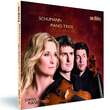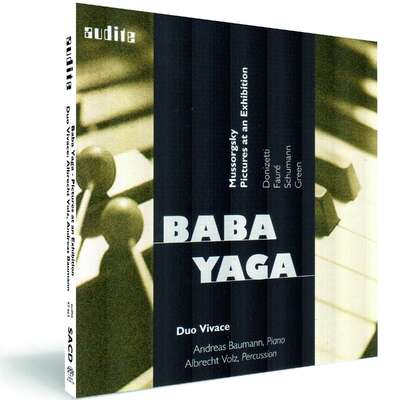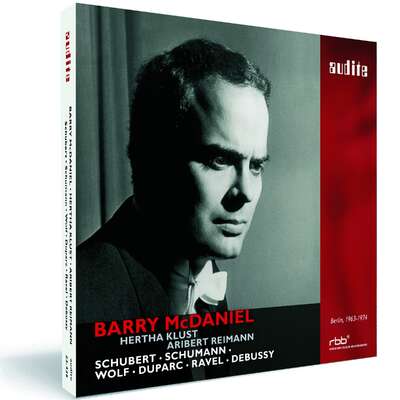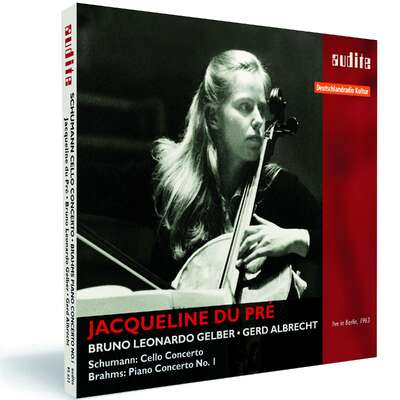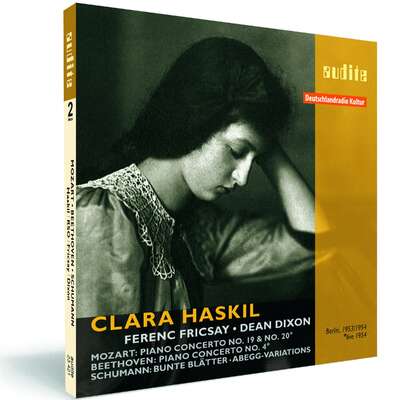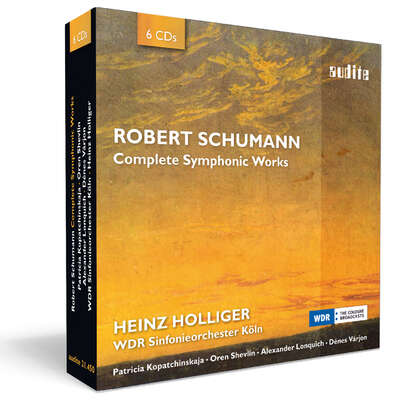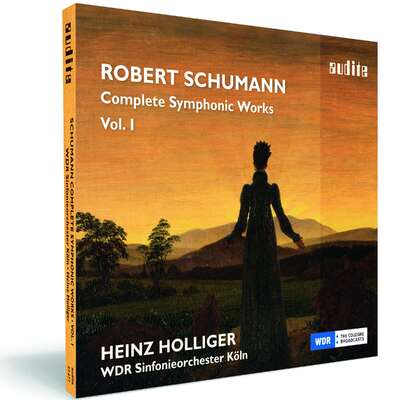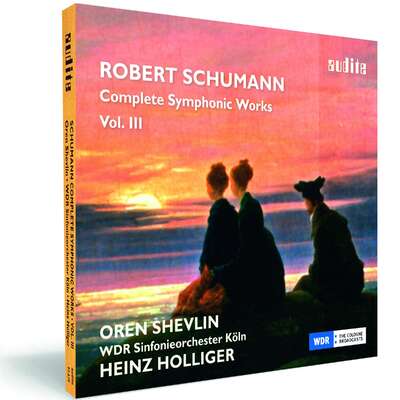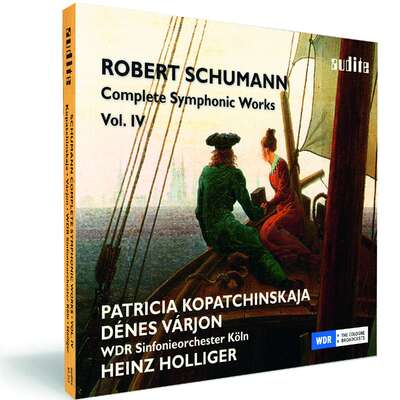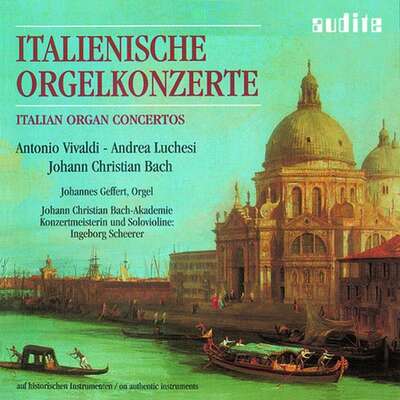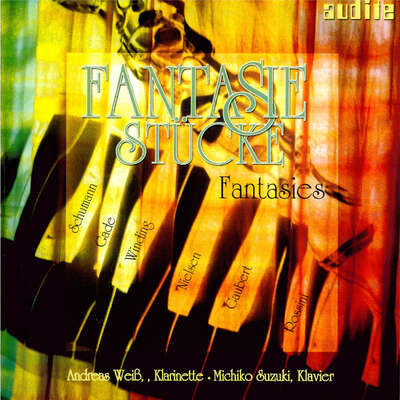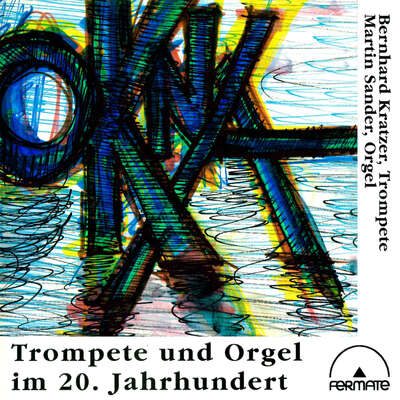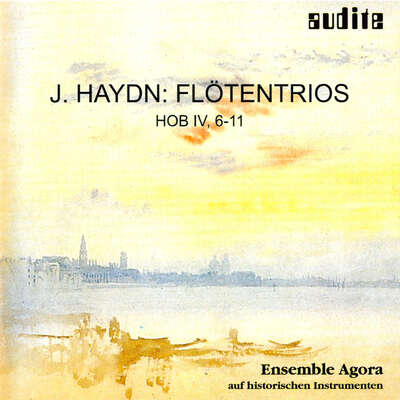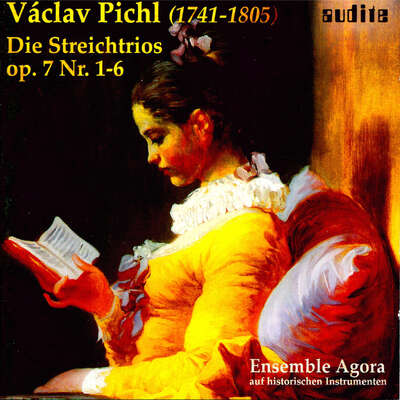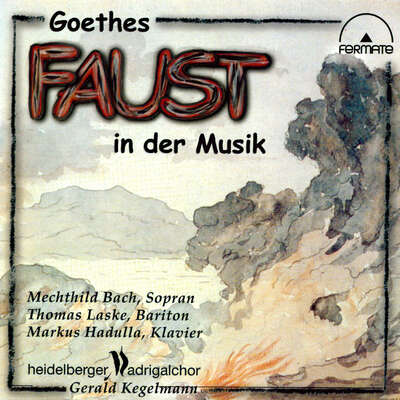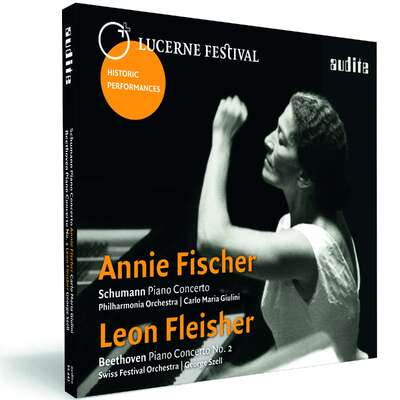
audite lässt der erfolgreichen Veröffentlichung der ersten beiden Klaviertrios von Robert Schumann mit dem Schweizer Klaviertrio eine zweite SACD mit den Phantasiestücken op. 88 und dem dritten Klaviertrio op. 110 folgen, ergänzt durch das einzige, zu Unrecht im Schatten der Werke ihres Mannes stehende Klaviertrio g-Moll op. 17 von Clara Schumann.mehr
"The Swiss Piano Trio are at turns sensitive, passionate, richly melodic, forcefully compelling. Their playing always has such terrific ensemble and precision, with them alive to every nuance, making this trio sound a wonderful piece." (The Classical Reviewer)
Details
| Robert & Clara Schumann: Piano Trios Op. 17, 88, 110 | |
| Artikelnummer: | 92.549 |
|---|---|
| EAN-Code: | 4022143925497 |
| Preisgruppe: | ACX |
| Veröffentlichungsdatum: | 7. Dezember 2012 |
| Spielzeit: | 77 min. |
Informationen
audite legt hier bereits die vierte Veröffentlichung mit dem Schweizer Klaviertrio vor. Der von der Kritik enthusiastisch rezensierten SACD mit Neuaufnahmen der beiden Klaviertrios Nr. 1 op. 63 und Nr. 2 op. 80 von Robert Schumann folgt nun eine zweite SACD mit den Phantasiestücken op. 88, dem dritten Klaviertrio op. 110 und dem Klaviertrio g-Moll op. 17 von Clara Schumann. In der Zusammenstellung der Werke werden die Unterschiede, vor allem aber die Gemeinsamkeiten der kompositorischen Sprache des Ehepaars Schumann bewusst. Clara Schumanns 1846 komponiertes Trio ist ein hervorragendes Werk der romantischen Literatur, das in der Konkurrenz zu den Trios ihres Mannes oder denen Mendelssohns durchaus zu bestehen vermag. Während es öffentlichen Erfolg hatte, aber der harten Selbstkritik der Komponistin zum Opfer fiel, verhielt es sich bei Schumanns letztem, 1851 in Düsseldorf entstandenem Trio genau umgekehrt. Durch das ungerechtfertigte Urteil, es sei schon von der sich anbahnenden Erkrankung des Komponisten gezeichnet und besitze nicht mehr die Originalität und gedankliche Kraft früherer Werke, ist dieses Meisterwerk der Kammermusikliteratur lange Zeit verkannt worden.
Besprechungen
Luister | maart/april 2014 | Emile Stoffels | 1. März 2014
Het heilig vuur is bij het Swiss Trio zeer aanwezig en met veel kleur bovendien. Tegelijkertijd is er veel precisie. Een fenomale SACD. De opname is voorbeeldig. Hoogste lof!Mehr lesen
Fanfare | Issue 36:6 (July/Aug 2013) | Jerry Dubins | 1. Juli 2013
This is now the third occasion on which I’ve been privileged to review a new release by the outstanding Swiss Piano Trio. The ensemble’sMehr lesen
Clara Schumann (1819–1896) was a devoted wife, loving mother, accomplished pianist, and, no doubt, a composer of some talent. But I’ve always felt that her eminence in the latter capacity has been exaggerated both by virtue of her being spouse to one of the most famous of romantic composers and for being somewhat of that 19th-century novelty, a female composer. It has thus come about that when someone is asked to name three or four women composers, Clara Schumann invariably tops the list. Yet, if one 19th-century composer of the female gender deserves equal billing with her male counterparts, it’s not Clara Schumann or Fanny Mendelssohn; it’s Louise Farrenc (1804–1875), a composer who wrote symphonies and chamber works on a scale and of a quality comparable to many of her male contemporaries.
The Piano Trio in G Minor, dated 1846, is Clara’s only large-scale chamber work; in fact, it’s her only chamber work of any scale, period. Most of her catalog consists of songs and pieces for solo piano, though, as a teenager, and later, with the help of her husband to be, she did try her hand at a Piano Concerto. The trio was long held to be Clara’s crowning compositional achievement; some even credited it with being the inspiration for Robert’s first numbered Trio in D Minor, op. 63, written the following year. Thus, I was rather surprised to find fewer recordings of Clara’s opus listed than I would have expected; and of those currently in the catalog, more than one logically pairs it with Fanny Mendelssohn’s Trio in D Minor, written in the same year, 1846.
Whether pairing Clara’s trio with Robert’s third and final Trio in G Minor, composed in 1851, is a logical choice or not, I can’t say, although it seems to me that juxtaposing Robert’s D Minor, the one supposedly inspired by Clara’s effort, would have made more sense. However, in addition to Robert’s G-Minor Trio, Clara’s trio also shares the disc with Robert’s 1842 Fantasiestücke, which, though otherwise named, is his actual first work in the medium, though not designated or numbered as such. The present program therefore makes this new release unique, at least insofar as other current listings are concerned, although another recent disc, which also happens to be in SACD format, contains Clara’s trio and Robert’s G Minor-Trio, but not Robert’s Fantasiestücke. That recording by the Boulanger Trio on the Ars Produktion label was filled out with a work for piano trio by Wolfgang Rihm, and was favorably reviewed by Steven E. Ritter in 33:5
I’ve not heard the Boulanger disc, but the playing here by the Swiss Piano Trio leaves nothing to be desired. I doubt that Clara’s trio has ever received a more loving performance. The only word that describes the ensemble’s tone is voluptuous, and Audite’s perfectly positioned and balanced recording affords that ideal sweet-spot perspective. I do agree with Steven that Clara’s trio is not Robert’s. One has only to listen to the first few bars of Robert’s G-Minor Trio to recognize the difference between talent and genius. But I honestly have to say that I don’t think I’ve ever appreciated Robert’s trio as much as I have in this performance. The Swiss players seem to be absolutely swept away by the score, sweeping me away in turn. It doesn’t even feel like they’re performing the piece as much as they’re becoming one with it and living and breathing it.
This is definitely going on my provisional list of Want List candidates for 2013, and I most strongly urge you to acquire it. The Swiss Piano Trio, in my opinion, has rapidly risen to become one of the very top piano trio ensembles on today’s stage.
Record Geijutsu | July 2013 | 1. Juli 2013
japanische Rezension siehe PDFMehr lesen
Pizzicato | N° 232 - 4/2013 | Steff | 1. April 2013
Brillante Aufnahmetechnik, virtuoses und hochkonzentriertes Spiel, drei wunderbare Musikstücke: Was will man mehr? Das 'Swiss Piano Trio' zeigt mitMehr lesen
International Record Review | April 2013 | Piers Burton-Page | 1. April 2013
'Formulae, somewhat wearily manipulated … evidence of the composer' s declining powers.' Poor Schumann! His G minor Piano Trio, the third of three,Mehr lesen
Maybe there is some truth in all this; one might concede that Op. 110 is not quite the equal of its two fine predecessors, even while echoing their layout and structure in many ways. Something to do with the memorability – or otherwise? – of the melodic material, something to do with a clash between public utterance and private, domestic music-making: the piano trio, that arch-Romantic genre, often seems poised on just this uneasy cusp. Still, the members of the Swiss Piano Trio, who have previously set down Opp. 63 and 80 for the same German label and evidently know and love their Schumann, seem to me to hold the balance nicely: the long opening 'Allegro' is nicely paced, not too fast but with something in reserve for the end, the inner movements (both half the length of the outer) also sure of themselves as character-pieces. The sound – the recording was made in a converted Huguenot church in Neuchâtel, last year – is agreeable, as you would perhaps hear it a few rows back, with the piano in proper perspective, i.e. not too close. Eight pages of comprehensive notes by Wolfgang Rathert offer a comprehensive survey of Schumann's chamber music, concentrating in particular on key-relationships in these trios, and are for the most part deftly translated by Viola Scheffel.
It is when Op. 110 is set against the Op. 88 Phantasiestücke for the same combination that one scratches one's head, again. Despite the high opus number these 'Fantasy Pieces' date in essence from 1842. And though the four pieces certainly don't suggest an organic Trio – the long and lively 'Humoreske' in the middle for a start would upset the balance of the movements – I can't help the entirely subjective feeling that the composer's inspiration was indeed burning rather brighter here. The short opening 'Romanze' and the upbeat march-like finale have that indefinable something that all lovers of this composer will recognize: something to do with energy and uplift, is it, or the arc of the melodies?
By way of further contrast, the Swiss Piano Trio opts to let husband and wife go head to head by putting Clara's sole example of the genre – in the same key as her husband's, be it noted – as the first item on the release. It can certainly stand the scrutiny and there are plenty of original touches: for instance, the second movement is a scherzo but in the manner of a minuet, and in it, the trio section indulges in some Baroque-style dotted rhythms. The players respect the 'Allegretto' marking of the finale, even while recognizing that it is a vigorous piece, complete with predictable fugato, that benefits from a firm hand on the tiller. Clara's G minor Trio dates from 1846, Robert's from 1851. I sense no rivalry at work, only the desire to write good music. In their own way each succeeded, and it is good to have their vision as nicely represented as it is here.
Musik & Theater | März 2013 | Sibylle Schäfer | 1. März 2013 Schumanniana
Clara Schumann, geborene Wieck, die Robert Schumann um mehr als vierMehr lesen
The Strad | March 2013 | David Denton | 1. März 2013 A welcome exploration of piano trios by the two Schumanns
Listening to this performance of Clara Schumann's Piano Trio, one can wellMehr lesen
BBC Music Magazine | March 2013 | JD | 1. März 2013
An attractive programme but the playing of the Swiss Piano Trio is, though enthusiastic, rather underimagined. A certain heavy-handedness does littleMehr lesen
www.ResMusica.com | Le 20 février 2013 | Jean-Luc Caron | 20. Februar 2013 Inoubliables Trios avec piano de Clara et Robert Schumann
Monsieur et Madame Schumann, 157 et 117 ans après leur disparition,Mehr lesen
http://theclassicalreviewer.blogspot.de | Monday, 28 January 2013 | 28. Januar 2013 Highly recommended Audite release of Piano Trios by Clara and Robert Schumann from the Swiss Piano Trio
The Swiss Piano Trio are at turns sensitive, passionate, richly melodic, forcefully compelling. Their playing always has such terrific ensemble and precision, with them alive to every nuance, making this trio sound a wonderful piece.Mehr lesen
Ensemble - Magazin für Kammermusik | 3-2013 Juni/Juli | Robert Nemecek Differenziert & homogen
Das Schweizer Klaviertrios, das Homogenität mit hoher Differenzierungskunst verbindet: [...] Der warme Ton, die atmende Phrasierung und das geschmeidige Zusammenspiel ergeben zusammen eine im besten Sinne "romantische" InterpretationMehr lesen
